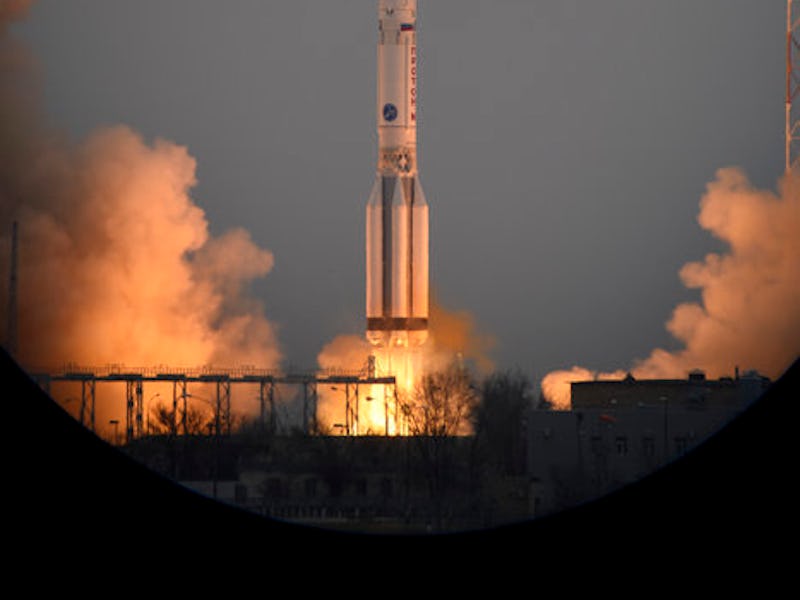ExoMars Mission Seeking Martian Life Launches
It's one big step for Europe and Russia.

There’s never been a better time to look for life on Mars, and Europe and Russia have long been waiting for their joint ExoMars mission to yield results. Now, the first two probes of ExoMars are officially on their way to the red planet after launching aboard a Russian Proton rocket this morning from Baikonur Cosmodrome in Kazakhstan. They are expected to reach Mars around October 19.
Today’s launch sent both an orbiter and a lander to augment the ongoing search for Martian life — dead or alive. The Trace Gas Orbiter (TGO) will orbit Mars and search for any traces of gas, particularly methane, that suggests biological activity. The Schiaparelli probe will land on the planet’s surface and take a range of measurements — including the first observations of Mars’s electrical field and the planet’s humidity and atmosphere, over about a week of scientific battery life.
At 5:41 a.m. Eastern Time, two probes launched that will offer the European Space Agency (ESA) and Roscosmos valuable insight into Mars — but also serve as proof of the agencies’ abilities to reach Mars. Neither the ESA nor Roscosmos has successfully landed a rover on Mars, and they each have a series of failures under their belts. Assuming everything goes well with this first mission, the ExoMars partnership will reunite in 2018 to send a rover to Mars that will be able to last longer than Schiaparelli’s two to eight days of scientific viability.
The ExoMars missions are Europe and Russia’s response to the high pressure from both NASA and private American spaceflight companies to investigate Mars. NASA was able to claim as its own the discovery of water on Mars, one of the biggest finds in the history of space exploration. Now, the friendly competition may support further missions, as the presence of water on Mars dramatically boosts the importance of the ExoMars program, almost guaranteeing future interest and funding.
The greatest obstacles for the mission still remain ahead. Placing a lander on Mars is notoriously difficult, and we won’t know whether it deploys successfully until late October. So, NASA should enjoy its final months of dominance on the surface of the red planet. It’s about to get a lot more crowded.